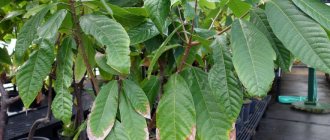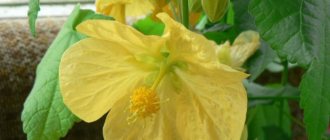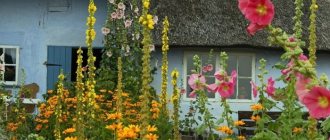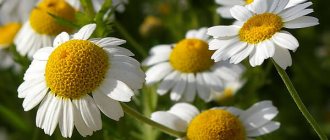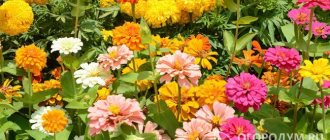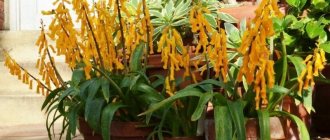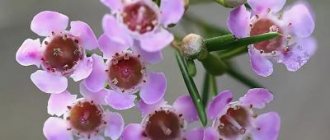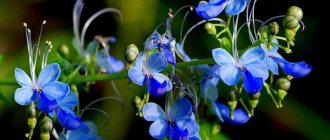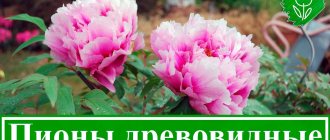One of the most common options for decorating a site is planting annual flowers. They are good because they bloom early, are easy to care for, and look bright and colorful. Seasonal flower beds are rarely complete without orange flowers - they attract the attention of passers-by and create a warm, sunny atmosphere. Orange color symbolizes energy and joy, so such annuals will not be out of place in any area!
Marigold
These flowers are extremely popular among summer residents and owners of private houses. They can also often be found in city flower beds, because they do not require complex care and always look very advantageous.
Of the large number of varieties, the most striking are the orange marigolds. They will be a wonderful decoration of the site, and will not require much effort in care. Marigolds can grow in almost any soil, but do not like excess moisture. Their flowering period is surprisingly long - orange flowers will delight residents and guests from May to September.
Kalanchoe Blossfeld
This representative of the succulent family of plants is popular among many gardeners. This amazing flower combines beneficial properties, the beauty of inflorescences, luxurious thick leaves and unpretentiousness.
Kalanchoe Blossfeld accumulates moisture in its leaves and shoots, which is why it requires moderate watering. Prefers a moderate amount of light, so grows well in partial shade. If the plant does not have enough sun, it weakens, the leaves turn yellow and subsequently fall off.
Kalanchoe blooms all year round, with the exception of 1-2 months a year. However, for this he needs to provide:
- temperature regime. In summer – from 20 to 26 °C, in winter – 12-16 °C. When the temperature rises to +10 °C, Kalanchoe must be exposed to air. If the room temperature exceeds 26 °C, it should be watered abundantly;
- regular fertilization. The flower is fed with fertilizers intended for succulents. The winter period is an exception;
- Avoid spraying. It is recommended to wipe the leaves of Kalanchoe with a damp cloth, which is a preventive measure against spider mites and false cushions.
Attention! When fertilizing Kalanchoe, it is necessary to take into account that the composition for feeding is mixed exclusively in warm water. Then it needs to be cooled and only then added to the soil. Otherwise, the roots will not receive all the nutrients.
Calendula
Calendula are annual flowers that are often orange in color. They are also known for their medicinal properties, but are most often used to decorate the local area.
Calendula blooms from July until frost, so brightness and beauty in the area will be ensured for a long time. It does not require careful care; the only requirement is that this plant should be provided with sufficient lighting.
Strelizia
The plant is of rare beauty and has incredibly exquisite orange flowers, which rise above the plant on long erect stems (“arrows”). Strelitzia is popularly called the “bird of paradise.” Its flower harmoniously combines orange and blue petals among thick, bright green, oval-shaped leaves. It reaches a height of 100 cm.
For active growth, the following conditions are necessary:
- frequent watering;
- bright lighting, including direct sunlight;
- moderate humidity;
- location - western, southern and eastern sides.
Peculiarity! If optimal conditions are provided, Strelitzia blooms 2-3 times a year: in spring, summer and winter. In autumn the plant is dormant. However, for this it is necessary to provide a large space and a lot of additional light.
Viola
Viola or tricolor violet is a favorite of landscape designers. It is often planted in city flower beds and garden plots. Viola is widely used to create alpine slides and flower carpets, which makes it possible to observe its frequent and vigorous flowering.
Osteospermum for seedlings: 5 useful tips for growing a flower
Newly bred varieties allow you to arrange lush rainbow compositions. Orange flowers will give you a sunny mood throughout the summer.
Hypocyrtha flower naked
The plant belongs to the ampelous family and has flowers of various shades of orange. Hypocyrta has a spreading stem with oval leaves of a dark green color. The plant reaches a height of 50 cm. Owners of Hypocyrta can observe its flowering every spring.
Necessary growth conditions:
- frequent abundant watering;
- air humidity - up to 85%;
- bright lighting;
- location on the east or west side.
Interesting! With proper care, Hypocyrta naked can bloom again.
Gatsania
Gatsania appeared in Europe relatively recently. Since its homeland is Mozambique, in Russia you can hear another name for this flower - African chamomile. Bright orange flowers bloom by midday and delight with their beauty until the evening.
Today there are more than 40 varieties of this plant. It is increasingly found in front gardens and flower beds, as its brightness and colorfulness attracts many owners of personal plots.
Clivia orange
This flower belongs to the amaryllis family and differs from plants of the same species in the absence of bulbs - clivia has a massive rhizome. Orange inflorescences look very impressive against the background of tongue-shaped leaves of dark green color.
Clivia is unique in that it can bloom in winter, when other plants have a dormant period. The bright orange flowers are odorless and stand out against the background of a spreading stem, the height of which is 50-100 cm.
Clivia care includes:
- moderate watering;
- temperature range – from 18 to 26 °C;
- humidity - up to 80%;
- the lighting is bright but dim;
- location on the north or east side.
Attention! It is not recommended to spray clivia; it is enough to maintain the required level of humidity in the room.
Nasturtium
Nasturtium or capuchin is a flower that provides a wide field for imagination. It masks unattractive and uneven areas of the territory, and also helps in creating cozy gazebos and verandas. This annual plant is most often grown in pots with drooping shoots and is usually planted in large quantities.
Calibrachoa from Seeds: 5 Helpful Tips for Growing
Nematanthus
This flower is one of the representatives of the Gesneriaceae family, which has six species, represented by vines, shrubs and subshrubs. Some species of Nematanthus have a long stem, a thin long peduncle and bright green leaves. The flowers can be orange, pink, red or yellow.
The orange inflorescences in question are somewhat reminiscent of hypocyrta or columnea. Due to this, some of the species of this plant were included in this family. The homeland of nematanthus is South America, however, if the necessary conditions are met, it can grow quite actively in apartments.
Nematanthus care includes:
- compliance with temperature conditions. The flower loves warmth, so during the growing season the room temperature should be 19-28 °C in summer, and in winter (during the dormant period) - from 13 to 17 °C;
- lighting. Nematanthus requires bright lighting, including direct sunlight. Daylight hours are at least 12 hours. If the plant does not have enough sunny color, it weakens, the leaves change color;
- watering. During the active period, watering should be abundant and regular; it is required as the top layer of soil dries. During the dormant period, the frequency and volume of soil moisture should be reduced;
- humidity. Humidity level – up to 60%. It should be borne in mind that the lower the temperature in the room, the lower the humidity level should be and vice versa;
- fertilizer. Feeding is recommended only during the active period;
- location. East or west side.
Attention! During the active period, nematanthus requires daily spraying. To do this, use soft water at room temperature.
Houseplants
Among indoor plants, flowers with orange flowers are not very popular. Usually pots with the most unpretentious representatives of the flora are placed on the windows , which during the flowering period do not please the eye, but do not irritate with excessive brightness or aromas.
Many tropical plants have orange inflorescences. They require special conditions and have their own characteristics.
Clivia
Clivia is one of the easiest plants to care for , but it blooms very spectacularly. This low-maintenance tropical flower requires no fertilizer and will survive if you forget to water it.
A few facts about clivia:
- it is an evergreen plant;
- grows up to 50 centimeters in length;
- inflorescences have a diameter of up to 20 centimeters.
Three species of this plant have been “tamed” by humans. Clivia cinnabar blooms in a rosette containing 10-20 flowers. It blooms from February to May, but if suitable conditions exist it can bloom at any time of the year.
Clivia Gardena is the tallest, usually its stems are 45-50 centimeters high and no less. There are 10-16 inflorescences in a rosette. Flowering occurs from mid to late Russian winter.
Clivia beautiful blooms at the same time. But there are much more flowers on its shoots - from 40 to 60 pieces.
Strelitzia
Strelitzia is another evergreen with orange flowers. The second name is “bird of paradise”, given for the unusual shape of the inflorescence. When the orange and blue petals open, they look like a small bird.
You can’t grow such a beauty on a windowsill. In order for the root system to develop, a very large pot is needed, so the plant is usually lowered to the floor.
In an apartment, Strelitzia can grow up to two meters, but usually it only stretches up to a meter. In its usual habitat - in the African heat, the bush can reach four meters in height.
The buds set in winter. Flowering can last up to six months if the plant has enough heat and light. Each sprout produces up to six flowers, but Strelitzia grows in bushes with several flower stalks, so flowering is usually abundant.
Crossandra
Crossandra is a representative of the flora that is very difficult to care for. It is necessary to provide it with warmth, humid air and the right neighbors. The flower loves to settle next to tropical greenery.
Just a day without water can kill a plant, a whole day can lead to serious dehydration. If the crossandra has hung its leaves, it means it needs to be rescued urgently. To do this, the pot is lowered into a basin of water. So it should stand until the greenery becomes elastic again.
Wild crossandra blooms all year round, but this is almost impossible to achieve at home. Domesticated species delight the eye with orange flowers from May to September.
Lantana
Indoor plant growing does not know many flowers that can take the form of a bush, a tree, or an ampel. Lantana is capable of this, but still by its nature it is a shrub with spreading branches.
For lantana to thrive, it needs a lot of space. Branches need space around them, roots need depth.
The branches of the bush are covered with light green bark, and in some species they are also covered with thorns. The leaves are up to 5 centimeters long and have carved teeth along the edges.
Flowers appear in early May and disappear in September. They are small, growing up to 5 centimeters in diameter. The inflorescence has the shape of a ball, not lush, with holes.
And this beauty also causes a lot of trouble. Special glands on the leaves secrete fragrant essential oil. In the wild, it attracts tsetse flies and small malaria carriers, mosquitoes.
Kalanchoe blossfeldiana
It is Brossfeld's Kalanchoe that attracts people's eyes to the windows of flower shops. Because of the glass you can see thick, bright blooms and lush foliage, like all succulents. Sellers assure that since the plant blooms on the counter, it does not need special care.
In fact, everything is not quite like that. During flowering, Kalanchoe is really better not to touch. It is also worth holding off on transplanting into a permanent pot. You need to work when the flowers begin to fade. All faded flower stalks need to be cut off and the bush replanted.
To achieve new flowering, you will have to watch the time. Kalanchoe should stand in the light no more than 10 hours a day. If you follow the schedule, the nutrients will go not to the foliage, but to the flowers. By October, the plant will again be covered with orange caps.
garden flowers
Any garden flower with orange flowers differs from a home flower in its resistance to natural factors and developed root system. Such plants can be planted in pots, but they will be cramped. Although there are also specimens that feel equally good indoors and in a flower bed, for example, the well-known geranium.
Bertholet's frog (Lotus berthelotii)
Branched bushes curved to the sides, flowers similar to crab claws - this “spruce”, originally from the Canary Islands, is called lotus, or Bertolet’s frog. The most common of the many species is the horned frog.
The stems spread along the ground, the length from the root to the upper leaves can reach 60 centimeters. The bushes are very lush, the leaves from a distance look like gray-green needles. Flowers, depending on the type, are collected in inflorescences or bloom singly in late spring.
Lyadvenets requires a lot of sun in the summer, and a large cool space in winter. If the temperature drops below -4 degrees, the bush must be well closed. Young lotuses are replanted annually, adults once every 2 or 3 years.
Hawkweed (Hieracium)
The case when the worst enemy of gardeners, the weed, was able to settle in gardens and flower beds. Hawkweed is a perennial crop that does not require any care, not even watering. Moreover, if you forget about the plant, then after a while one bush can sow the entire free space of the flower garden.
Three species of the plant are domesticated, but only one of them blooms orange flowers - the orange-red hawkweed. It can grow in any soil, but performs best on dry soil with sand in well-lit areas.
The flowers are typical of a member of the Asteraceae family with many long and narrow petals. The leaves are up to 15 centimeters long, there are many of them, and their structure resembles that of a dandelion.
Emilia
Emilia is another unpretentious garden plant. The only thing it requires is timely watering.
Botanists describe it this way:
- grows on single bare stems;
- height 50−60 centimeters;
- dark green leaves are collected at the root;
- the flowers are fluffy, up to two centimeters in diameter;
- Flowering time is from June to September.
Emilia is a semi-weed plant. Its seeds are very small; 1 gram can contain up to one and a half thousand pieces. Fading buds must be cut off before the seeds disperse , otherwise shoots will sprout in all available places.
Home care
Despite its unpretentiousness, clivia requires compliance with certain maintenance rules in order to fully develop in indoor conditions.
Primary requirements:
- The soil is slightly acidic and loose, with good drainage. Any universal soil mixture for indoor flowers will do, or you can mix equal parts turf with leaf soil and add one part sand for looseness. You can also add one part of peat and humus to two parts of turf.
- Temperature. In summer, the temperature is maintained no higher than 26°C, and in autumn and winter, about 15°C until the first peduncle. Then increase to 20 °C.
- Humidity and watering. Clivia needs the usual level of humidity typical for residential premises, but in hot weather it is recommended to spray and wipe the leaves with a damp sponge. Watering should be regular, once a week in summer and slightly less often in winter. During the flowering period, watering is increased.
- Lighting level. Bright diffused light without direct sunlight. It is best to install the pot on windows facing west or east.
- Transfer. Young plants need it every year, and adults every three years. The older the plant, the worse it reacts to transplantation. For older specimens, it is enough to limit yourself to annual replacement of the top layer of soil in the pot.
- Flowering and dormant period. In order for the plant to bloom regularly and luxuriantly, it needs to be given the opportunity to rest and gain strength. To do this, the plant is placed in a cool place for 2-3 months in the fall and watering is reduced. Fertilizers are also not applied. The pot must not be rotated during flowering.
- Reproduction. Clivia can be propagated by seeds, but this is difficult and not very reliable. If you use side shoots, you can get a flowering plant in the second year. The shoots are taken during transplantation when they have at least 4 leaves.
- Feeding is recommended once every two weeks from early spring to late summer. Use universal mixtures for blooming indoor flowers. During the flowering period, exclude fertilizers with a high nitrogen content.
Detailed information on plant care can be found here.
Botanical description
Clivia (lat. Clivia) is a perennial evergreen herbaceous plant, about 60 cm high, belongs to the Amaryllis family.
Despite the bulbous family, Clivia does not have a bulb as such. The main feature is the absence of a stem. It is replaced by a rosette of dense leaves growing straight from the base.
Main characteristics:
- The leaves are long, dark green, with a shiny surface. They grow so densely that they form a false stem. They have a thickening at the base, which makes them look like an onion. At home, the length is no more than half a meter, but in nature they can grow up to 1.5 meters in length. Color may vary depending on age.
- Root system - consists of fleshy fibrous roots that accumulate nutrients like bulbs.
- The flowers are large, sometimes up to 4 cm in diameter, collected in 20-30 pieces in umbrella-shaped inflorescences on a straight flower arrow. The shape resembles a bell. There is usually only one peduncle, but sometimes there are two or three flower stalks on one bush. The color of the flowers is bright - from yellow-white and orange to dark red.
- The aroma is unusual and pleasant - a mixture of rose, nutmeg and vanilla with a light herbal trail.
- The fruits are small, fleshy berries.
The main disadvantage of the plant is its toxicity.
The roots and leaves of clivia contain poisonous alkaloids, so when handling it you need to be careful and keep it away from pets and small children.
Useful properties of the plant
In its homeland, clivia has been used since ancient times in folk medicine to treat feverish conditions, and also as a medicinal drug for snake bites. The healing properties are associated with the characteristics of the alkaloids clivimine, lycorin and clivadine contained in the leaves and roots. With their help, you can normalize blood circulation and tone of the heart muscle.
The plant also has the ability to purify indoor air well, especially if there are smoking residents in the apartment. In this case, clivia must be periodically taken out into fresh air to restore.
